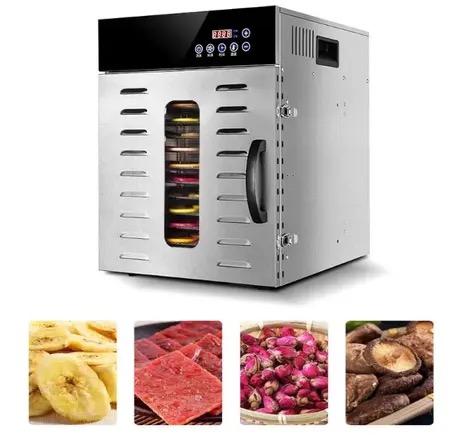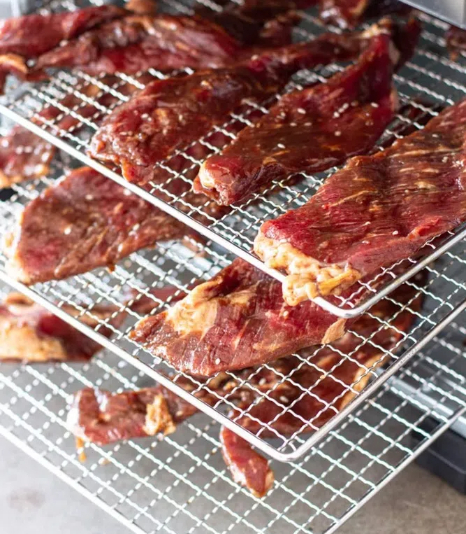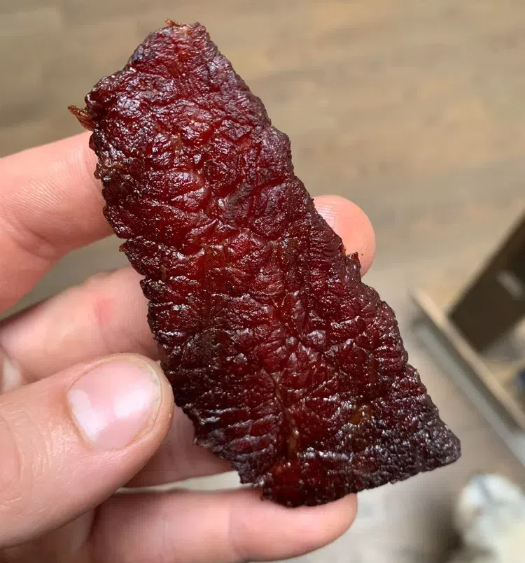Introduction
Hang type dryers are essential tools in the food processing industry, particularly for drying fruits, vegetables, and other food products. These dryers utilize a unique design that allows for efficient air circulation and moisture removal, ensuring high-quality dried products. This article delves into the customization options available for hang type dryers, focusing on their features, benefits, and applications in the food industry.

Understanding Hang Type Dryers
Hang type dryers are designed to suspend food items in a controlled environment where heat and airflow can effectively remove moisture. Unlike traditional dryers that rely on flat surfaces or trays, hang type dryers offer several advantages:
1. Space Efficiency: By utilizing vertical space, these dryers can accommodate more products in a smaller footprint.
2. Improved Airflow: The design allows for better air circulation around the food items, leading to more uniform drying.
3. Reduced Risk of Contamination: Since the food is suspended, there is less chance of contact with surfaces that may harbor bacteria or contaminants.
How Hang Type Dryers Work
Hang type dryers operate using a combination of heat and airflow. The basic principle involves:
1. Heating Elements: These elements generate heat that warms the air within the drying chamber.
2. Air Circulation: Fans or blowers circulate the warm air around the hanging food items, promoting even drying.
3. Moisture Removal: As moisture evaporates from the food, it is carried away by the airflow, maintaining a low humidity level inside the dryer.
This process ensures that food is dried efficiently and uniformly, preserving its flavor, color, and nutritional value.
Customization Options
When considering a hang type dryer for food processing, customization options play a crucial role in meeting specific production needs. Here are some key areas where customization can be applied:
1. Size and Capacity
The size of the dryer can be tailored to fit the production scale. Options range from small units suitable for artisanal producers to large industrial models capable of handling significant volumes.
- Small Units: Ideal for small-scale operations or home use where space is limited.
- Medium Units: Suitable for mid-sized businesses looking to increase production without compromising quality.
- Large Industrial Units: Designed for high-capacity operations that require continuous drying processes.
2. Heating Methods
Different heating methods can be integrated into hang type dryers:
- Electric Heating: Provides consistent temperature control and is easy to manage. Electric heaters can be adjusted to meet specific drying requirements.
- Gas Heating: Offers rapid heating capabilities but requires careful monitoring to ensure safety. Gas heaters can be more cost-effective in large-scale operations.
- Solar Heating: An eco-friendly option that utilizes renewable energy but may depend on weather conditions. Solar-powered dryers are becoming increasingly popular among environmentally conscious producers.
3. Airflow Control
Customizing airflow is vital for optimizing drying efficiency. Adjustable fans and vents can be incorporated to control the speed and direction of airflow, ensuring that all products receive adequate drying without overexposure to heat.
- Variable Speed Fans: Allow operators to adjust airflow based on product type and moisture content.
- Directional Vents: Help target airflow specifically where it is needed most, enhancing drying efficiency.
4. Humidity Control
Incorporating humidity sensors allows for real-time monitoring and adjustment of moisture levels within the dryer. This feature ensures that drying occurs at optimal conditions, preventing spoilage or degradation of quality.
- Automated Humidity Adjustment: Some advanced models can automatically adjust heating and airflow based on humidity readings.
- Data Logging Capabilities: Track humidity levels over time to ensure compliance with food safety regulations.
5. Automation Features
Modern hang type dryers can include automation options such as:
- Programmable Controls: Allow users to set specific drying cycles based on product type. This feature helps streamline operations by reducing manual intervention.
- Remote Monitoring: Enables operators to track performance and make adjustments from a distance using mobile devices or computers.
- Data Logging: Records temperature and humidity levels over time for compliance with food safety regulations and quality assurance.

Benefits of Customization
Customizing hang type dryers offers numerous benefits:
1. Enhanced Efficiency: Tailored features ensure that drying processes are optimized for specific products, reducing energy consumption and time.
2. Quality Assurance: Custom controls help maintain consistent quality across batches by preventing overheating or under-drying.
3. Cost Savings: Efficient dryers reduce operational costs by minimizing energy usage and waste.
4. Flexibility in Production: Customizable features allow businesses to adapt quickly to changing market demands or product lines without needing new equipment.
Applications in Food Processing
Hang type dryers are versatile and can be used across various sectors within the food industry:
1. Fruit Drying
Hang type dryers are ideal for producing dried fruits like apples, apricots, raisins, bananas, and mangoes. The gentle drying process helps retain natural flavors while extending shelf life without preservatives.
2. Vegetable Drying
These dryers are suitable for dehydrating vegetables such as tomatoes, peppers, carrots, and herbs like basil or oregano. Dried vegetables maintain their nutritional value while being lightweight and easy to store.
3. Meat Drying
Used in jerky production where controlled drying is crucial to prevent spoilage, hang type dryers ensure that meat products are dried evenly while preserving flavor and texture.
4. Seafood Drying
Hang type dryers can also be employed in seafood processing for products like fish fillets or shrimp. Properly dried seafood has an extended shelf life and retains essential nutrients.
5. Herbal Products
For businesses focused on herbal products such as teas or medicinal herbs, hang type dryers provide a gentle method of preserving delicate plant materials while maintaining their potency and aroma.
Maintenance Considerations
To ensure optimal performance from your hang type dryer, regular maintenance is essential:
1. Cleaning: Regularly clean the interior surfaces to prevent buildup of residues that could affect product quality.
2. Inspection of Heating Elements: Check heating elements periodically for wear or damage to maintain efficiency.
3. Fan Maintenance: Ensure fans are functioning correctly; replace any worn-out components promptly to avoid airflow issues.
4. Calibration of Sensors: Regularly calibrate humidity and temperature sensors to ensure accurate readings and effective control during operation.
5. Software Updates (if applicable): For automated systems with digital controls, keep software updated to benefit from improvements or new features offered by manufacturers.
Conclusion
In conclusion, hang type dryers represent a significant advancement in food processing technology. The ability to customize these units according to specific needs enhances their efficiency and effectiveness in producing high-quality dried foods. As the demand for dried products continues to rise globally, investing in customized hang type dryers will provide a competitive edge in the market while ensuring compliance with safety standards.
By understanding the various customization options available—ranging from size adjustments to automation features—food processors can select equipment that best fits their operational requirements and product specifications. This not only improves productivity but also helps maintain high standards of quality across all dried food products.

FAQ
1. What types of foods can be dried using hang type dryers?
Hang type dryers are suitable for a variety of foods including fruits (like apples and bananas), vegetables (such as tomatoes), meats (for jerky), seafood (like fish), and herbs (like basil).
2. How do I determine the right size dryer for my needs?
The right size depends on your production volume; smaller operations may require compact models while larger businesses may need industrial-sized units capable of handling higher capacities efficiently.
3. Can I automate my hang type dryer?
Yes! Many modern hang type dryers come with automation features such as programmable controls for specific drying cycles and remote monitoring capabilities through mobile apps or computer interfaces.
4. What heating methods are available for these dryers?
Common heating methods include electric heating (for consistent temperature control), gas heating (for rapid heating), and solar heating (an eco-friendly option utilizing renewable energy).
5. How does humidity control benefit the drying process?
Humidity control ensures optimal drying conditions by adjusting moisture levels in real-time; this prevents spoilage during storage while maintaining product quality throughout its shelf life.
Citations:
[1] https://www.iqsdirectory.com/articles/dryer/types-of-dryers.html
[2] https://www.samsung.com/us/support/answer/ANS10001020/
[3] https://patents.google.com/patent/CN110207480A/zh
[4] https://hang-dry.com/product/hang-dry/
[5] https://www.lg.com/us/support/help-library/lg-dryer-cycles-and-options--20152068325571
[6] https://patents.google.com/patent/CN112481977B/zh
[7] https://www.whirlpool.com/blog/washers-and-dryers/how-choose-laundry-cycles.html
[8] https://hkele.com.hk/en/info/different-types-of-clothes-dryers











